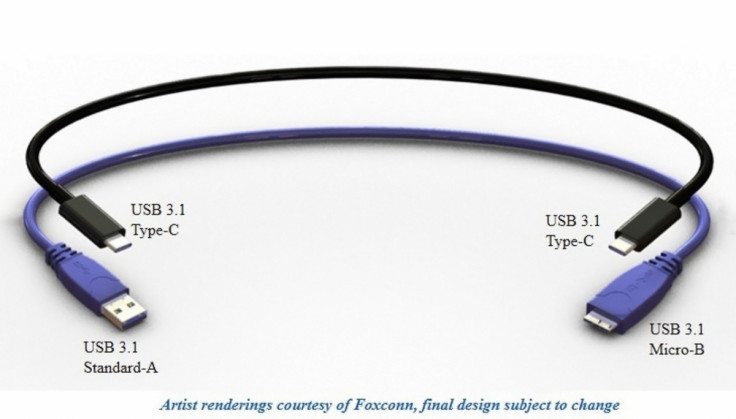Reversible USB Cables That Will Make Life Easier: First Pictures

The days of being frustrated by having to flip your USB cable over repeatedly to plug it in are almost over, as the first pictures of the new USB Type-C cables have been released.
The USB Implementers Forum, which oversees the Universal Serial Bus specification, announced plans to develop a new USB standard in December to replace the current microUSB standard, almost universally used to power smartphones and tablets today.
"The specification is anticipated to be completed in July 2014. We could see products with the new cable by end of year," the USB IF told CNET at the Intel Develop Forum conference in Shenzhen, China.
At the moment, there are a large range of USB cables with different connectors on each end. that can lead to frustrations when trying to plug a digital camera, smartphone, tablet, eReader or smartphone into the PC.

The new Type-C cables will run on the USB 3.1 standard, which supports 10Gbps transfer rates, although the USB prong itself will measure 8.3mm x 2.5 mm, which is slightly smaller than the common USB cable ports in PCs but slightly larger than the microUSB cables used to connect mobile phones.
The new cables are designed to be plugged and unplugged 10,000 times and will make an audible click when plugged in correctly.
Type-C will also be able to accommodate higher data transfer speeds in the future and is able to carry power in order to charge and operate devices using the USB Power Delivery technology.
The USB Promoter Group, which now consists of Intel, HP, Microsoft, Renesas Electronics and Texas Instruments, is keen to compete with Apple's Lightning connector, as most of the industry is stuck using the older (and slower) microUSB standard.
However Apple is now being forced to change its lightning connectors by 2017 in order to meet new EU regulations that require all mobile phone manufacturers to sign up to a common standard for universal device battery chargers.
© Copyright IBTimes 2024. All rights reserved.






